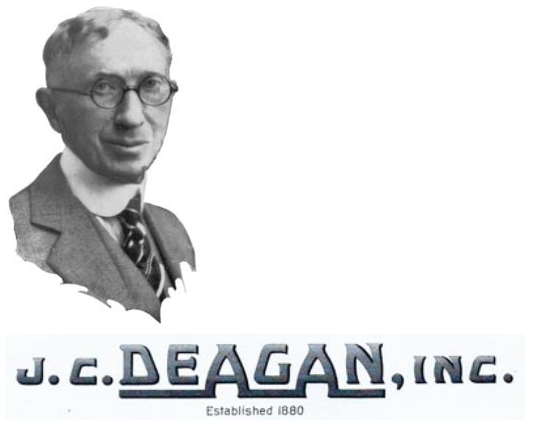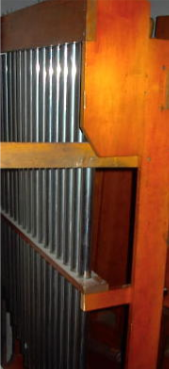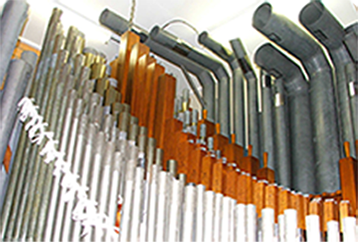Frequently we hear that theatre pipe organs come equipped with Deagan tuned percussions, often chimes. We present here some background on this great percussion maker from the past.

John Calhoun Deagan, musician and manufacturer, was born in Hector, N.Y. on Nov. 6, 1853, the son of Irish immigrants. He attended public schools in Ohio, and Raines College, and in 1871 enlisted in the U.S. Navy. While his ship was in English waters he studied music at the University of London. He eventually became a nationally known performer on the clarinet. A series of lectures in London by Hermann von Helmholtz, German physicist, aroused his interest in the science of sound, and later, while serving musical engagements in various parts of the United States, he conducted experiments with the sound of musical instruments. His first product was an improvement upon the crude glockenspiel, which as a German importation had appeared in one or two American orchestras. He succeeded in transforming the rough pieces of metal into a set of perfectly tuned bells, which soon became standard orchestra equipment. Deagan began to manufacture these bells in 1880.

Deagan Chimes enclosed in an organ chamber.
Later he developed many other musical instruments, including the xylophone using Honduran rosewood for the bars, organ chimes, Swiss handbells, and orchestra bells. He developed the marimba from a jungle novelty into an accepted musical instrument. He evolved the original marimbaphone with metal into the vibraharp, the drawn tubular cathedral chime for pipe organ and orchestra use, and the steel bar celeste and wood bar harp for pipe organ use. In 1910 he developed the dinner chime. Another of his products was a radical improvement in carillons for churches and public buildings.
Starting as a one-man operation in St. Louis he began to manufacture the instruments he had invented. He moved the business to San Francisco in 1893, and finally to Chicago in 1897. By 1898 he was devoting his full time to manufacturing. The business was later incorporated in 1913 as J. C. Deagan Musical Bells, Inc. Three years later the name was changed to J. C. Deagan, Inc. He was president of the corporation from its inception until his death in 1934.
In 1910 Deagan persuaded the American Federation of Musicians to adopt A=440 as the standard universal pitch for orchestras and bands, thus settling a long dispute. The standard was accepted by the US government and generally throughout the world. Deagan was also deeply interested in astronomy, geology, chemistry, and all branches of physics, particularly the theories of light and sound, and he was considered an authority on pitch and acoustics.
Following his death, the company continued to thrive under the leadership of first his daughter-in-law Ella Smith Deagan, then her son, "Jack" Deagan, and daughter, Jayne Deagan Evans. In 1978, the company was purchased by the Slingerland Company, and then sold to Larry and Sandra Rasp (Sanlar Corporation) in 1984. Today, Deagan glockenspiels and chimes are marketed by the Yamaha Corporation based on the trademark and patented designs of the "Grand Old Man" of musical percussion instruments. Deagan tower bells and chimes continue to ring throughout the world as an enduring tribute to the genius, inventiveness, and musical contributions of John Calhoun Deagan.










